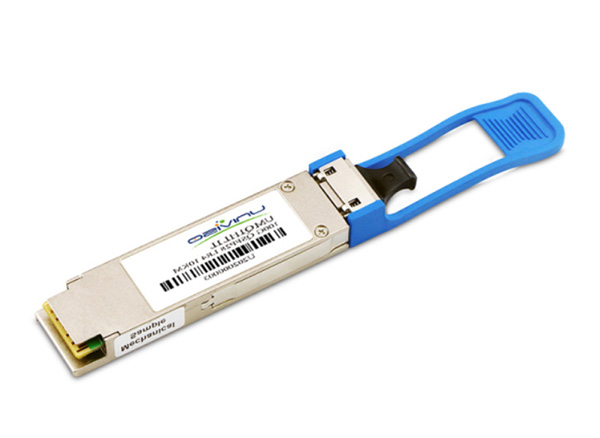
This article dives into the technical specifications, transmission distance, application scenarios, and compatibility of these two modules to help network engineers and IT decision-makers make the right choice.
The most apparent difference between 100GBase-ZR4 and 100GBase-LR4 lies in their supported transmission distance:
100GBase-LR4: Designed for distances up to 10 kilometers over single-mode fiber (SMF).
100GBase-ZR4: Supports ultra-long-reach applications with a maximum distance of 80 kilometers, typically using DWDM technology and requiring amplifiers and dispersion compensation.
Both transceivers use four wavelengths around the 1310 nm window, but the optical design and modulation techniques differ significantly:
100GBase-LR4: Operates in the CWDM range (1264.5–1337.5 nm), uses LAN-WDM grid, and employs direct modulation with PIN receivers.
100GBase-ZR4: Uses the C-band DWDM spectrum (1528–1565 nm), often with cooled lasers, optical amplifiers, and coherent detection.
Optical budget is another key differentiator:
100G LR4: Optical budget is typically 6.3 dB to 8.9 dB, suitable for short-range fiber links.
100G ZR4: Higher optical budget (>20 dB), accommodating attenuation, patch panels, and inline equipment like amplifiers.
ZR4 systems usually require EDFA, DCM, and mux/demux components.
100G LR4 is more cost-effective and energy-efficient:
Typical power consumption: 3.5W to 4.5W
Lower unit price, easier integration into standard data center infrastructure
100G ZR4 involves:
Power consumption often exceeding 6W
Higher upfront cost due to complexity and optics
| Feature | 100GBase-LR4 | 100GBase-ZR4 |
|---|---|---|
| Reach | Up to 10 km | Up to 80 km |
| Fiber Type | SMF | SMF |
| Use Case | Data center, enterprise networks | Metro access, long-haul telecom |
| Technology | LAN-WDM (CWDM) | DWDM + amplification |
| Cost | Lower | Higher |
| Power | Lower | Higher |
| FEC | Optional | Mandatory |
In summary, 100GBase-ZR4 vs 100GBase-LR4 is not a matter of which is better, but which is better suited for your network environment. LR4 is ideal for short-to-mid distance connections up to 10 km with cost and energy efficiency in mind. ZR4 is designed for long-haul transmission, offering extended reach and DWDM compatibility — at a higher complexity and price.
Evaluate your deployment scenario, fiber infrastructure, and budget when selecting between ZR4 and LR4. Making the right transceiver choice ensures long-term performance, scalability, and ROI.
Headquarter address :Room 1603, Coolpad Building B, North District of Science and Technology Park, Nanshan District, Shenzhen,China.518057